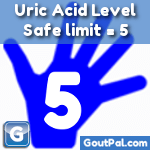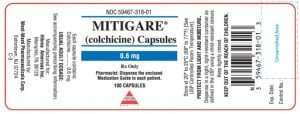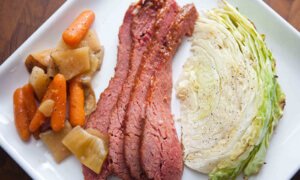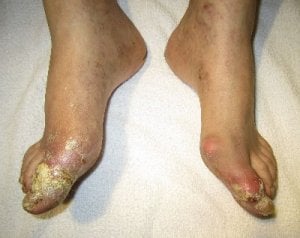As I was sharing yesterday’s post about the real dangers of gout, a friend pointed out a new report about gout and heart disease that moves us closer towards understanding the links between these two diseases.
In The effects of gout on left atrial volume remodelling[1], Taiwanese researchers have shown significant effects of gout on the heart. There is still much work to do before we can get a useable practical understanding, but this is another milestone pointing towards better clinical practice for gout and heart disease.
I will incorporate a more complete summary of the latest research into a new heart page within gout-associated diseases for Gout Victims. That will summarize various recent studies that investigate the links between heart disease and gout. It may take me a while to review all the relevant information, so here is a mini review of this new research.
Gout and Heart Disease Study
Researchers divided 173 patients into 4 groups of varying severity of gout. Severity was not measured by uric acid level. But by the progression of tophi. The least severe cases had no visible tophi and no gout symptoms. More severe cases had gouty arthritis with tophi.
The subjects underwent comprehensive testing of heart pumping ability. Where the heart has difficulty pumping blood, it is common for the Left Atrium to become enlarged. The researchers found that impaired heart pumping ability and left atrium enlargement were associated with progressive severity of gout. This link is strong enough for them to predict that high uric acid combined with enlarged left atrium are indicators of tophaceous gout. More importantly, they predict that the changes to the heart caused by gout may cause heart attacks.
Gout and Heart Disease: Next Steps
Following on from this investigation, it would be nice to see some case studies to evaluate if reduction of tophi through uric acid lowering treatment leads to improved heart health. Other reports suggest that allopurinol may reduce the risk of heart disease[7], so there is some hope.
Rather than rely on hope, you need to take action today. I can only repeat my pleadings from yesterday, and hope you control gout and your life.
Not long until Valentine’s Day now. I hope you take care of your gout and your heart.
Gout and Heart Disease Comments
GoutPal visitor responses include:
Cardiovascular Gout Complications
Joe asked about updates to this page following new professional rheumatology guidelines. Because he’s hoping to discuss this at his next specialist consultation. But the new guidelines seem dismissive of heart disease causing gout complications:
These guidelines do not directly address the impact of gout or hyperuricemia on other comorbidities, such as cardiovascular disease (CVD)…
CVD and Gout
I’m actually working on Cardiovascular Disease (CVD) studies that relate to the ACR 2020 gout guidelines update. Interestingly, there seems to be a lot of research into this area now. Maybe prompted by the comment in those guidelines about insufficient supporting evidence for recommendations where gout patients also suffer comorbidities. So I will also review some new studies since those guidelines were prepared[2-6].
If you’re particularly keen to see this new heart disease and gout research, ask me to prioritize the updates using the feedback form below. In any case, please subscribe to get email notification when I publish new pages:
Leave Gout and Heart Disease to read more about common gout comorbidities (page in development – use the search box above to find more pages about comorbidities).
Gout and Heart Disease References
- Pan, Kuo-Li, Jing-Chi Lin, Chun-Liang Lin, Mien-Cheng Chen, Pey-Jium Chang, Ju-Feng Hsiao, Shih-Tai Chang, and Chang-Min Chung. “The effects of gout on left atrial volume remodelling: a prospective echocardiographic study.” Rheumatology 53, no. 5 (2014): 867-874.
- Masaki, Mitsuru, Toshiaki Mano, Akiyo Eguchi, Shohei Fujiwara, Masataka Sugahara, Shinichi Hirotani, Takeshi Tsujino, Kazuo Komamura, Masahiro Koshiba, and Tohru Masuyama. “Long-term effects of L-and N-type calcium channel blocker on uric acid levels and left atrial volume in hypertensive patients.” Heart and vessels 31, no. 11 (2016): 1826-1833.
- Gancheva, Rada N., Atanas I. Kundurdjiev, Mariana G. Ivanova, Todor G. Kundurzhiev, Rasho K. Rashkov, and Zlatimir G. Kolarov. “Ultrasonographic measurement of carotid artery resistive index and diastolic function of the heart in gout patients.” Rheumatology international 35, no. 8 (2015): 1369-1375.
- Kuo, Yu-Jui, Tzu-Hsien Tsai, Hui-Ping Chang, Sarah Chua, Sheng-Ying Chung, Cheng-Hsu Yang, Cheng-Jei Lin, Chiung-Jen Wu, and Chi-Ling Hang. “The risk of atrial fibrillation in patients with gout: a nationwide population-based study.” Scientific reports 6, no. 1 (2016): 1-8.
- Gancheva, Rada, Atanas Kundurdjiev, Mariana Ivanova, Todor Kundurzhiev, and Zlatimir Kolarov. “Evaluation of cardiovascular risk in stages of gout by a complex multimodal ultrasonography.” Rheumatology international 37, no. 1 (2017): 121-130.
- Gancheva, Rada, Atanas Koundurdjiev, Mariana Ivanova, Todor Kundurzhiev, and Zlatimir Kolarov. “Obesity, Echocardiographic Changes and Framingham Risk Score in the Spectrum of Gout: A Cross-Sectional Study.” Archives of rheumatology 34, no. 2 (2019): 176.
- Wei, Li, Isla S. Mackenzie, Yang Chen, Allan D. Struthers, and Thomas M. MacDonald. “Impact of allopurinol use on urate concentration and cardiovascular outcome.” British journal of clinical pharmacology 71, no. 4 (2011): 600-607.
Please give your feedback
Did this page help you? If yes, please consider a small donation. Your donations help keep GoutPal's gout support services free for everyone.
If not, please tell me how I can improve it to help you more.
- YouTube
- The gout forums.










